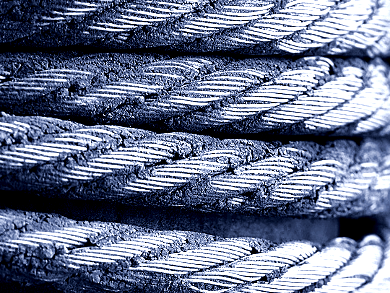In March 2014, an Ebola epidemic broke out in the West African state of Guinea. The first cases had occurred in December 2013. By May 2016, the World Health Organization (WHO) had recorded more than 28,000 infections, of which more than 11,000 were fatal.
Ebola is a zoonosis, a disease that spreads to humans from animals (here probably bats) and then spreads in the human population under certain conditions. Zoonotic pathogens are often more dangerous than those that have long adapted to humans as hosts, because their survival does not depend on the survival of the affected people. Measles and chickenpox are, for example, zoonoses which are dulled by mutual adaptation of pathogen and host.
Due to the dangerous nature of the virus, its structure has long not been investigated. John A. G. Briggs, European Molecular Biology Laboratory (EMBL), Heidelberg, Germany, and colleagues have done so by using cryo-electron tomography and subtomogram averaging of intact viruses [1]. It turned out that the genome of the Ebola virus is a single-stranded RNA. It serves as a template for the synthesis of messenger RNA, from which the affected cell then produces the viral proteins. The RNA of the viral genome is located on the outside of a tube of protein molecules. The RNA is protected by this and remains readable.
The tube structure of the protein molecules has a diameter of 80 nm. The protein molecules are arranged in the form of a left-handed helix, the capsid. This arrangement is unusual. Other tubular protein-like capsid viruses, such as the well-studied tobacco mosaic virus, protect the viral genome inside the protein tube, which is significantly smaller in these viruses.
In the Ebola virus in the cell, the whole construct is additionally wrapped in a bladder of normal double membrane. The virus simply takes the membrane of the infected cell as it passes through it. How it looks under this shell and how exactly the RNA is embedded in the tower wall and protected against digestion, could only be clarified by detailed structural models.
An additional protective structure was found: Near the C-terminal end of a studied fragment, a α-helix with a positively charged end is formed, which clasps the nucleic acid. This region of the protein sequence is disordered in the single molecule and, therefore, has not appeared in previously studied crystal structures.
- Der Turmbau des Ebolavirus,
Michael Groß,
Nachr. Chem. 2018.
https://doi.org/10.1002/nadc.20184071914 - [1] Structure and assembly of the Ebola virus nucleocapsid,
William Wan, Larissa Kolesnikova, Mairi Clarke, Alexander Koehler, Takeshi Noda, Stephan Becker, John A. G. Briggs,
Nature 2017, 551, 394–397
https://doi.org/10.1038/nature24490




